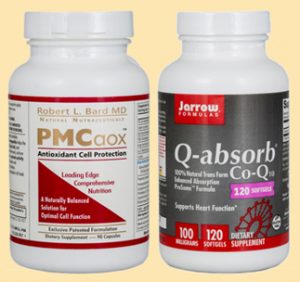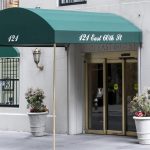Antioxidants come from animal, mineral and botanical sources. Animal cells manufacture the important enzymes Co Q-10, glutathione and super-oxide dismutase. These act by fighting free radicals (oxidants) and catalyzing chemical reactions that stabilize the free radicals. (Note: Our body also makes these substances, but acute imbalance or disease states require greater amounts for combating disease-causing agents.) Mineral antioxidant sources include zinc, copper and selenium. These must be carefully balanced since overdosage of any one mineral may be harmful. Botanical sources make up the vast majority of chemical defenses against free radicals. Vitamins A, C and E are especially useful. Vitamin A works by quenching free radicals. Vitamin C offers up free electrons to the molecules that crave them. Vitamin E prevents oxidation by breaking the free radical chain reaction. Vitamin D potentiates the effect of supplements and antioxidants.
Thousands more botanical antioxidants are called phytonutrients and fall into three categories;
- Flavonoids, a group that currently includes more than 4,000 chemicals, are all-purpose scavengers because they find free radicals and then neutralize them by donating electrons. Quercitin, found in vegetables, dark chocolate and fruit skins, is especially active in this function. A large subcategory is polyphenols and phenolic compounds found in grapes, blueberries, pomegranates, cherries, raspberries, cranberries, grains and black and green tea. Resveratrol occurs in minute quantities in red wine.
- Lignans come from seeds, like flax and sunflower.
- Carotenoidsare found in tomatoes, carrots, watermelon and spinach. The two main antioxidants are lycopene and lutein.
A prostate-specific reason to use antioxidant supplements comes from the 2007 American Society of Clinical Oncology presentation of pathologist Dr. De Marzo (Johns Hopkins) and Dr. Nakai (Osaka University, Japan) entitled Inflammation and Prostate Carcinogenesis. PIN (prostatic intraepithelial neoplasia or abnormal cells that are not yet cancerous) seems to be a precursor for invasive prostate cancer and is detected only by biopsy. The standard medical treatment for this condition is to watch and wait. Antioxidant treatments block inflammatory LOX (lipoxygenase) enzymes and may help prevent PIN from progressing to aggressive cancer. The relationship between antioxidant pathways and highly aggressive “interval cancers” is undergoing intensive study at this time. The use of combinations of Co-enzyme Q-10 and resveratrol containing antioxidants to control cancer and inflammation is published in Dermatologic Ultrasound (Springer New York 2012) and Image Guided Prostate Cancer Treatments (Springer New York 2013).
* None of the statements on this website should be construed as making claims that these products prevent, mitigate or cure cancer, cardiovascular disease, prostate disease, infection or any other disease.
 PREVENTION
PREVENTION BARD CANCER DIAGNOSTICS is founded on the commitment to explore and implement the latest diagnostic technologies as a means of building the proper treatment strategy of many types of cancers. We also specialize in the PREVENTION solutions for our patients who strive to maintain a health-conscious lifestyle as well as those who are at increased risk of certain diseases by confirming that their efforts to prevent disease are working.
BARD CANCER DIAGNOSTICS is founded on the commitment to explore and implement the latest diagnostic technologies as a means of building the proper treatment strategy of many types of cancers. We also specialize in the PREVENTION solutions for our patients who strive to maintain a health-conscious lifestyle as well as those who are at increased risk of certain diseases by confirming that their efforts to prevent disease are working.